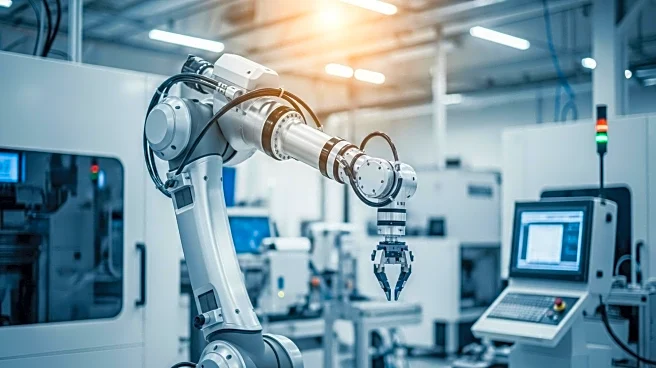What's Happening?
The International Federation of Robotics (IFR) has released a report indicating that the global deployment of industrial robots in manufacturing and warehousing remained flat in 2024. The report highlights that 542,000 industrial robots were deployed worldwide, a slight increase from 541,000 in 2023, but below the record of 553,000 in 2022. The United States accounted for 68% of installations in the Americas, with a 9% decrease to 34,200 units. China remains the largest market, with 295,000 robots installed, marking a record annual total. The report also notes regional variations, with Europe experiencing an 8% decline in installations, while Asia saw growth in countries like India.
Why It's Important?
The stagnation in industrial robot deployment reflects broader economic and technological trends impacting the manufacturing sector. In the U.S., the decline in installations may signal challenges in maintaining competitive advantage in automation. The report underscores China's dominance in the robotics market, which could influence global supply chain dynamics and manufacturing strategies. The data suggests potential shifts in investment priorities and technological adoption, impacting industries reliant on automation for efficiency and productivity.
What's Next?
The IFR forecasts a 6% growth in global robot installations in 2025, with expectations to surpass 700,000 units by 2028. This anticipated growth may drive increased investment in robotics technology and innovation, particularly in regions seeking to enhance manufacturing capabilities. Stakeholders in the U.S. and other regions may need to adapt strategies to leverage emerging opportunities in automation and address competitive pressures from leading markets like China.
Beyond the Headlines
The report highlights the potential for robotics to transform manufacturing processes, but also raises questions about workforce implications and the need for skills development. As automation becomes more prevalent, industries may face challenges in balancing technological advancement with employment and training needs.












